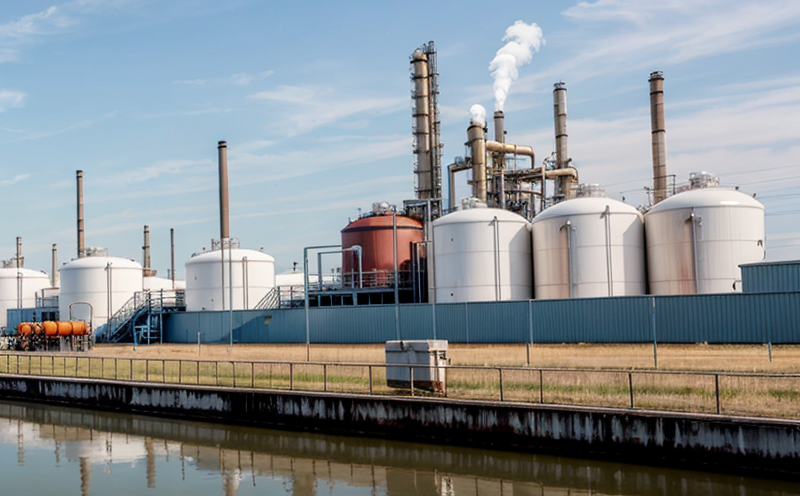EPA 6010 ICP OES Chemical Safety Testing
The EPA 6010 ICP-Optical Emission Spectroscopy (ICP-OES) method is a cornerstone of chemical safety testing, particularly in the industrial sector. This method provides precise and accurate measurements of elemental impurities in various matrices such as water, soil, air, and solid materials. It helps ensure that products meet stringent environmental regulations set by the U.S. Environmental Protection Agency (EPA).
ICP-OES is a versatile technique used for both qualitative and quantitative analysis. Its ability to detect trace amounts of elements makes it invaluable in identifying potential hazards associated with chemical exposure. The method is often employed in industries such as pharmaceuticals, electronics, construction materials, and environmental remediation.
The EPA 6010 standard specifies a range of procedures for the determination of metallic impurities in water using ICP-OES. This includes sample preparation techniques like digestion to ensure complete dissolution of solid samples before analysis. The precision and accuracy of the results depend heavily on meticulous sample handling, which must be carried out under controlled conditions.
For industrial applications, this method is critical for maintaining compliance with regulatory requirements. By identifying trace amounts of potentially harmful elements early in the production process or supply chain, businesses can mitigate risks associated with non-compliance penalties and health hazards. The ICP-OES technique also supports continuous improvement initiatives by providing reliable data that informs decision-making processes aimed at enhancing product quality and safety.
The testing involves several key steps: sample collection, digestion, dilution if necessary, injection into the plasma torch of an inductively coupled plasma optical emission spectrometer (ICP-OES), and finally measurement. The instrument emits a continuous spectrum of light from which specific wavelengths are selected to identify particular elements present in the sample.
Standard operating procedures outlined by EPA 6010 ensure consistency across laboratories performing these tests. Compliance with this standard is essential for maintaining credibility within regulatory bodies like OSHA and the EPA itself, as well as ensuring accurate reporting of results.
To illustrate some real-world applications, let’s consider how this testing impacts different sectors:
Why It Matters
Ensuring compliance with EPA 6010 standards is crucial for maintaining environmental integrity and public health. The presence of even trace levels of certain metals can lead to significant environmental degradation or pose serious risks to human health if not managed properly.
In the context of industrial chemical safety testing, ICP-OES plays a pivotal role in safeguarding workers from occupational hazards by identifying harmful elements before they reach dangerous concentrations. Additionally, it helps manufacturers meet stringent quality control standards and avoid costly recalls due to non-compliance issues.
The methodology supports regulatory compliance efforts aimed at reducing pollution levels and promoting sustainable practices throughout the supply chain. By detecting problematic compounds early in the process, companies can take corrective actions promptly, thereby minimizing negative impacts on both people and ecosystems.
Applied Standards
| Standard | Description |
|---|---|
| EPA Method 6010A | Determination of metals in water by ICP-OES |
| ASTM D7409-12 | Standard test method for determining metal impurities in water using ICP-OES |
The EPA 6010 series of methods provides detailed guidelines on how to perform various types of analyses using ICP-OES technology. These include methods for analyzing metals in solid matrices, soil samples, and other environmental media.
Industry Applications
| Industry Sector | Application |
|---|---|
| Pharmaceuticals | Detecting heavy metal contamination in drug products and raw materials. |
| Electronics Manufacturing | Ensuring the purity of metals used in semiconductor fabrication processes. |
| Construction Materials | Evaluating the elemental composition of concrete additives and other construction materials. |
In each industry, ICP-OES plays a vital role in quality assurance programs designed to protect both employees and consumers from harmful substances. For example, in pharmaceutical manufacturing, detecting trace amounts of lead or arsenic could prevent the release of potentially toxic medications into the market.





